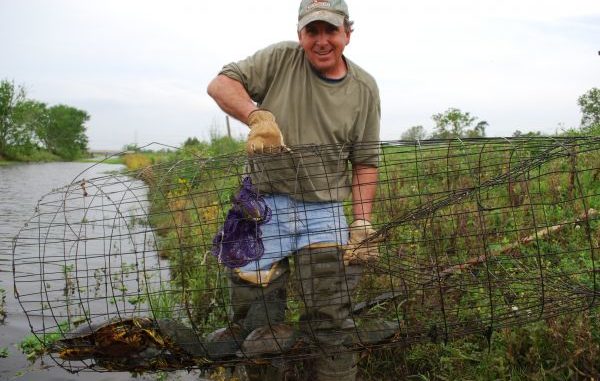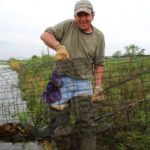
Some might consider turtles little more than potential pets — or some exotic meal in a fancy restaurant. But this Lafourche Parish native eats them whenever he can catch them.
Louisiana sportsmen do some odd things.
In few states will full grown men spend all night running around in boats trying to catch frogs. In most states, crawfish, almost always called crawdads, are something kids play with.
In Louisiana’s freshwater marshes, whole families go out in boats starting in July to harvest the grape-sized seeds of water lotus plants, which they call graine a voler (pronounced GRAH-nah-vo-lays). These they boil in saltwater, with or without crab boil, and eat like peanuts.
These sports are part of our state’s subsistence culture — the culture of enjoying living off the land.
Catching and eating freshwater turtles is another of these subsistence sports. And Dirk Matherne is good at the sport.
“Eating turtles is like eating crawfish,” he said. “You crave them when you haven’t had them in a while.
“If I call my sons when I catch some turtles, they will be right over.”
And the 58-year-old Cajun is out to satisfy his craving. His quarry won’t be the freshwater monsters, the snapping turtle or the alligator snapper (loggerhead).
He is going to run his turtle trap to catch what he calls “mobelians,” smaller turtles, the kind that crawl on logs to sun themselves.
If he catches a few softshell turtles, too, so much the better. They taste good too.
Matherne was impatient to check his trap when I reached his rural home between Raceland and Des Allemands. As soon as he gots in sight of the trap, it was obvious that he has been successful.
Turtle noses dimple the water’s surface inside the trap.
He hauled up the trap to the clatter of shells, as the turtles in it scuttled over each other. A big grin broke out on his face. He had enough for a couple of good “messes.”
As he removed the turtles from the trap one at a time into a big plastic lug and rebaited the trap to set it back out again, he talked about turtles and family.
“My dad, Dan Matherne, was a commercial crabber in Des Allemands,” he said. “That’s where I grew up. He did everything in the wild, from picking thistles (the flower stems make great salad) to catching crawfish to hunting. He used to be a fur trapper and operated a crab factory at the same time that he crabbed.
“The only thing that he never did was play golf.”
He laughed loudly at the thought.
“I used to catch turtles for my dad to clean,” Matherne said. “A lot of people don’t fool with mobelians. They’re work-intensive. But I like them better — they have a more pleasant taste than loggerheads.”
The loggerheads to which Matherne referred commonly grow to 40 to 60 and occasionally over 100 pounds. Cleaning them produces more meat for the same amount of effort than does cleaning smaller turtles.
“I clean softshell turtles the same way that I clean mobilians, but I cook them separately,” he continued. “I feel that softshells are less tender and need more cooking time. They are good, but I like mobelians better.
“I love the taste of turtle. It has a unique and awesome flavor. My momma Bessie always cooked turtle. I’ve been eating them since I was a kid and I could put rice and gravy in my mouth.”


